NINE ELMS, BATTERSEA & BATTERSEA PARK
The US EMBASSY pointed out on the map

LBTC tour route
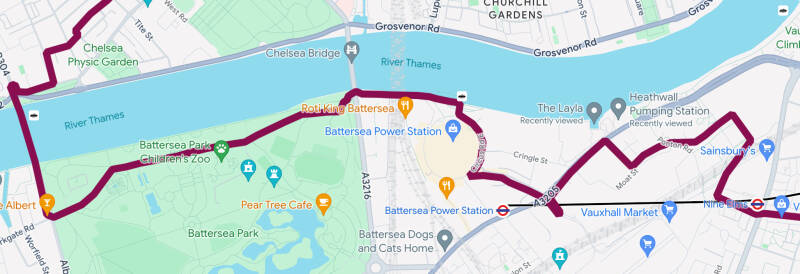


Buses from NINE ELMS
You are now in the London borough of wandsworth
It forms part of Inner London and has an estimated population of 329,677 inhabitants. Its main communities are Battersea, Balham, Putney, Tooting and Wandsworth Town.
Wandsworth takes its name from the River Wandle, which enters the Thames at Wandsworth. A different theory?: Wandsworth appears in Domesday Book of 1086 as Wandesorde and Wendelesorde. This means 'enclosure of (a man -or a tribe?- named) Waendel', whose name is also lent to the River Wandle.



The fess, or crossing, of the shield is chequered blue and gold representing the arms of William de Warren, created first Earl of Surrey by William Rufus. Each gold square bears a teardrop representing the tears of the French Huguenots, many of whom settled in Wandsworth from 1685.
The ship at the top may refer to the Wendels, a tribe of sea-raiders from the Continent who supposedly gave their name to the district, for Wendelsworth was an early variation of Wandsworth. The four shields and oars on the ship represent the four parishes of Battersea, Putney, Tooting and Wandsworth.
The dove to the left is taken from the former Battersea coat of arms and the black dragon to the right was taken from the former Wandsworth arms and also refers to London, being similar to the City of London coat of arms.
First named in 1645 after -as it is believed- a row of trees bordering the country road, when the hamlet laid at the eastern end of the VILLAGE OF BATTERSEA. From that time, it became a centre of industries, including brewing, lime kilns, potteries, woodyards and timber docks. Several windmills lined the river bank, surrounded by fields and osier beds. BATTERSEA New Town was begun in the 1790s, providing houses for the expanding labour force over the next hundred years. The railway, opened in 1838, first had its terminus at Nine Elms. Afterwards goods yards and works covered many acres. Its neighbours were the gasworks, established in 1833, and the waterworks, site of the later power station. Among all the factories, was the chapel of St George's-in-the-Fields, built in 1828 and destroyed during the 2nd World War.
After the War, the area became neglected and the railway yards and many factories closed down. Then, in 1974 the NEW COVENT GARDEN MARKET opened, followed, after further years of dereliction, by new factories, making Nine Elms once again the industrial heart.
Today, nine elms stand on the north side of the road near the river, opposite the US Embassy.

Dubai on thames, manhattan… Remember?

Yes, once upon a time, VAUXHALL and SOUTH LONDON vibe was rooted in working class culture… Remember the LAMBETH WALK, the music halls, the dance and the cockney street markets. This was one of the hearts of COCKNEY LONDON. People lived in affordable flats, inside not very attractive COUNCIL ESTATES. Once upon a time…
Now the area is showing signs of lack of affordable housing… WANDSWORTH COUNCIL has to place people in temporary accommodation outside of the borough.
Definitely, NINE ELMS has a new, shiny LU STATION, and another one has opened near de BATTERSEA POWER STATION, and as the NORTHERN LINE now reaches these shores and this has an impact in rents, business and residential. Rents have risen by 35% since 2011. You need a salary of 70.000 to afford a dwelling here. As in other parts of London gentrification has pushed traditional communities out… A new clientele is arriving for a new type OF shops cafés, pubs and restaurants.
NEW COVENT GARDEN MARKET
New Covent Garden Market is the largest fruit, vegetable and flower market in the UK. They pride themselves of being passionate about food and flowers and on being the focus for food and flowers in London. With over 200 businesses, employing over 2,500 people, the Market supplies 40% of fresh fruit & vegetables eaten outside of the home in London and is used by 75% of London florists. They have a large range of different types of food and flower businesses serving London's best restaurants, cafés, schools, hospitals, florists and retail markets, amongst others. If you're looking for the best produce, delivered with the best service then you can do no better than to take a trip to New Covent Garden Market. The Fruit & Vegetable Market wholesalers trade from around 00:00 - 06:00 Monday to Saturday, though some do open and close slightly later or earlier.
(NEW)COVENT GARDEN have been selling fresh produce and flowers to London and beyond since 1670. The market was moved here in 1974, when this area was still industrial, working class, poor, run down… Now, it sits beside the USA EMBASSY, so it has had to tidy up a little bit!

Food Exchange is a bold new home for London’s food entrepreneurs of every flavour, that opened in February this year. The facility is unique to the UK, comprising a workspace, kitchen space and food culture venue for everyone and everything to do with food. Private studios are ready to rent now for all types and sizes of businesses working in food. The Food Exchange is partnering with Mission Kitchen to create London’s largest shared kitchen space, alongside co-working space, for London’s small and ambitious food makers.
New Covent Garden Market’s aim is to create London’s greatest cluster of food entrepreneurs and to nurture the future of food. An incubator for innovators and the food stars of tomorrow, the Food Exchange spans three floors and as a new home to the winner will provide the opportunity to become part of this incredible food community and develop amongst like-minded entrepreneurs.

A bit of extra info….
Wholesale markets
BOROUGH MARKET, a wholesale market?
in the 20th century Borough Market was essentially a wholesale market, selling produce in quantity to greengrocers. In fact, wholesalers still operate in BM (GROVERS, TURNIPS)

City of london CorporatioN’s wholosale markets
SPITALFIELDS, fruit and vegetable: old and new


Specialising in exotic fruits and vegetables has been a welcomed development which has contributed to the success of New Spitalfields Market
BILLINGSGATE, fish market : old and new
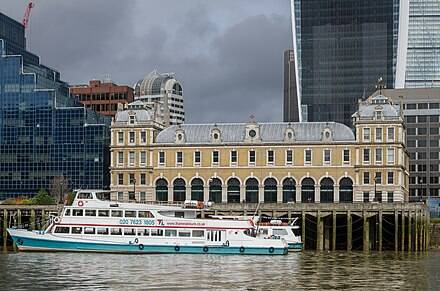

Each trading day at Billingsgate Market offers buyers an opportunity to see the largest selection of fish in the United Kingdom. Daily arrivals from the coast and overseas ensure a continuity of fresh supplies and with some 40 merchants trading in close proximity in the Market Hall, competition is keen.
Wishing to VISIT BILLINGSGATE?

What about learning to cook fish?. You can sign up for a fish course at the in-house Billingsgate Seafood School. It’s run as a charitable organisation with the aim of promoting the inclusion of fresh fish in a healthy diet and to help promote the market and keep fishmongery alive. The school, which is on the first floor of Billingsgate, offers a wide range of courses including Sushi making at Billingsgate which show you how to prepare fresh fish.
SMITHFIELD, meat and pouLtry
More than 100,000 tonnes of meat and allied products pass through Smithfield each year. Buyers include butchers, restaurateurs and caterers, as well as members of the public. In addition to meat and poultry there are also cheese & pies available for purchase.
The future of london’s wholesale markets: BARKING

The City of London Corporation has approved plans for a major regeneration programme, which will see London’s historic wholesale markets relocated to a purpose-built site in Dagenham Dock East London, bringing thousands of jobs to the area, and allowing the redevelopment of the old sites
corporation of london?. Well, this has nothing to do with markets, but…

Based in Guildhall, the City Corporation looks after and promotes the City of London. It is headed by the Lord Mayor with the Court of Common Council being its main decision-making body. They are a uniquely diverse organisation, with a role that goes beyond that of an ordinary local authority. We have our own government (the oldest in the country with origins pre-dating Parliament), our own Lord Mayor and independent police force.
As the governing body of the Square Mile, we are dedicated to a vibrant and thriving City, supporting a diverse and sustainable London within a globally-successful UK.
The City of London, also known as the Square Mile, is the financial district of London. It is the ancient core from which the rest of London developed. It has been a centre for settlement, trade, commerce and ceremony since the Roman period, producing a unique historic environment of exceptional richness and significance.
One of the reasons the Square Mile is unique, is the number of people who live, work and visit. In just 1.12 square miles, the City of London counts 8,600 residents, 614,500 workers and millions of domestic and international visitors. Its stretch from Temple to the Tower of London, on the River Thames including, from west to east Chancery Lane and Liverpool Street.
USA EMBASSY
The Embassy building, designed by Philadelphia-based architecture firm KIERAN TIMBERLAKE, is a translucent crystalline cube that gives form to core democratic values of transparency, openness, and equality. Its unique façade affords generous natural light throughout the interior and takes advantage of the site’s striking views.
The lake and gardens are an integral part of the new Embassy in Nine Elms, being not just decorative and thanks to water reclamation, environmental, but also part of the defensive structure around the building.
The moat lake only protects one side, the side where high speed vehicles could approach from, and if they were to do so, they’d fall down a sloping garden, into a lake and be stopped dead. That’s if they get past the metal bollards that line the border, and are rather pleasingly hidden between two hedges.
Rainwater running off the building is filtered through drainage bioswales before being stored in the lake, where it is then used for watering the plants.
The lake is also fed and aerated by two large waterfalls which not just refresh the water, but help, slightly, to drown out the road traffic noise next to the park.
After long decades based in “little america” (mayfair)…

Back on tour…
Embassy gardens
Yes, it is a swimming pool hanging up there…

A residential and business development built by Ballymore Group in the Nine Elms regeneration zone, surrounding the United States Embassy building opened in 2017. It features the transparent Sky Pool, which is suspended 115 feet in the air between the development's prominent buildings.
On 16 February 2012, Wandsworth Council approved Ballymore Group's plans for the 15-acre development. Embassy Gardens was intended to provide "up to 1,982 new homes alongside shops, cafes, bars, restaurants, business space, a 100 bed hotel, a health centre, children's playgrounds and sports pitches".


Riverside walk (a lovely view from the other side of Nine elms LanE)
Bourne valley wharf. NINE ELMS PAVILION

2018. Designed by Studio Weave and artist Linda Florence, this public space along the river is a beautiful addition to the neighbourhood. It is intended as a space for relaxing by the river, for events, and for performances to take place.
Heathwall pumping STATION & thames super-sewer works
The River Heathwall, more often known as the Heathwall Sewer,[1][2] Heathwall Ditch or Heathwall Mill Pond[3] was a set of field drainage ditches and a large mill pond in Battersea, London. It had two outlets into the tidal Thames and its inland section roughly followed Wandsworth Road. Its eastern outlet was at Nine Elms.[4]
The Greenwoods' map of 1827 confirms the mill pond served a tide mill, harnessing of the locally great tidal energy.[5] The generic prototype may have such a mill in the nascent City of London, in Roman Britain.[6]
The river was covered in 1866, as was the nearby Falconbrook. Pumping stations were added for the drainage of northern Battersea and to allow for widespread development.[1][7] Heathwall Pumping Station is now part of the Thames Tideway Scheme.



Now that you are here: have a look at Pimlico!…on the other side of the river

BUCKINGHAM PALACE is, in fact, in PIMLICO
BEN PIMLICO, an Italian runninhg an ale house in… HOXTON, HACKNEY. Nobody knows how this district get that name!
The tyburn river
St.george’s square, The only London garden square abutting to the Thames

St George's Square is a prestigious and very long garden square in affluent Pimlico, Central London. It benefits from gardens and a church in its central area. Near the northern acute angle, the square is intersected by Lupus Street. Pimlico tube station is a short distance east. Its north-east side is in effect Belgrave Road and southern side is arterial Grosvenor Road which is lined by a small public garden in front of the River Thames
Dolphin square. Luxury housing.MINISTER, SPY, PROSTITUTE

Dolphin Square is a block of private apartments built between 1935 and 1937. At the time of their construction the development was billed as the largest self-contained block of flats in Europe. It has been home to many Members of Parliament
Churchill gardens council housing state
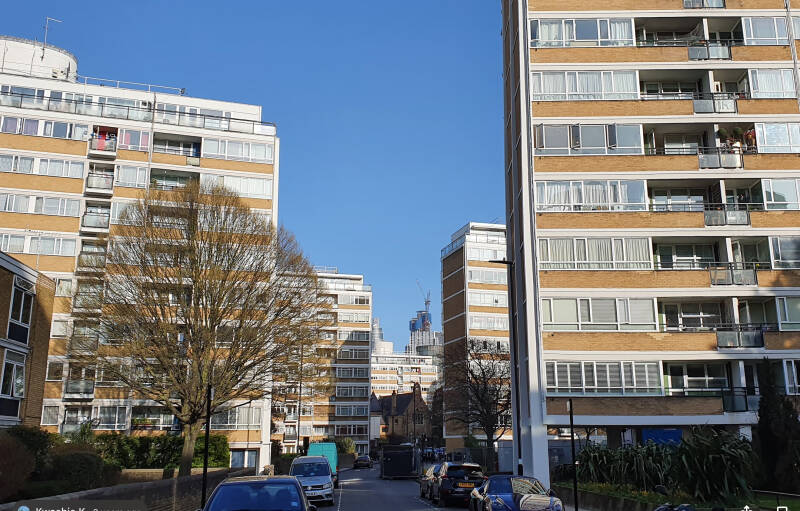
Churchill Gardens is a large housing estate covering the south-west corner of Pimlico. It was developed between 1946 and 1962 to a design by the architects Powell and Moya, replacing docks, industrial works, and several Cubitt terraces damaged in the Blitz.
THE PIMLICO diSTRICT HEATING undertaking
The first district heating system built in the United Kingdom, it is owned by Westminster City Council and operated by CityWest Homes. The system is connected to 3,256 homes, 50 business premises and three schools.
The system began operations in 1950, and originally used waste heat from BPSta which was pumped under the Thames through a disused Metropolitan Water Board tunnel. A thermal store was built in Churchill Gardens, which could hold 2,300m³ and remains the largest thermal store in the UK.

For More about pimlico see chapter 7b

Let us follow the proper LBTC route again…
The linear park
A cluster of new pocket parks have been created as part of the Nine Elms property developments and are pretty appealing.
In the centre of the development is The Linear Park, which eventually will be a 1km long line of parks running from VAUXHALL STATION, through the estate, and, apparently on to Battersea Power Station. Amongst those patches, a large sunken lawn surrounded by seating benches and an assumption that the stone walkway around the edges will be used as well on dry days.
There’s an elm tree in the lawn, which a sign notes is one of nine that have been planted in the park for the late Queen’s Platinum Jubilee, although they were planted after she died, so they could have changed the signs to memoriums. Still, Nine Elms once again has nine elms. The sunken lawn is also lined on several sides by bedding plants that’ll look a lot better once they have bedded in next year.
artwork

A giant white disembodied foot, with a ring embedded in the sole, can be found in the gardens next to the US Embassy. By Simon Fujiwara, a Berlin-based British-Japanese artist who made his mark in 2012 exhibiting at Tate St. Ives.
RIVEr LIGHT



A 21st c. development by the ROGERS architectural partnership. The scheme includes 813 homes, underground parking, crèche, restaurants, bars, a food store and other retail spaces. It incorporates a river walk and landscaping to take full advantage of its location and create attractive public spaces for the local community. The development is made up of six buildings, arranged in a rising-form composition, ranging in height from 12 to 20 storeys and giving the development a varied skyline. Around 60 per cent of the scheme is designated as public open space.
The old Dutch barge moored in Nine Elms has its own colourful past with little outward evidence of its turbulent history. The Maria II was built in Holland in 1932.
After completion she sailed to France where she transported grain between Rouen and Paris until World War Two. In 1941 Hitler demanded all available seafaring vessels to transport tanks for his planned invasion of the UK. The Maria II would have seen active service carrying shipments of tanks between Germany and France.




HISTORY OF THE LONDON TAXI (WHILE YOU HAVE A COFFEE
The old tideway village: Living BARGES
More about this development; https://www.spectacle.co.uk/spectacleblog/tag/tideway-village/
Tideway Village forms part of a larger houseboat community moored next to Battersea Power Station. Tideway Village consists of three houseboats – the LAYLA, the NEWARK and the ST.MICHAEL- which are home to 25 people that are moored in one of the Thames’ last tidal docks. In spring 2010, it became known that Tideway Industrial Estate had been sold to developer ST.JAMES, a subsidiary group of BERKELEY HOMES, who specialise in riverside developments. Whether the community thought the development added or detracted from the area was not an an issue but a very significant threat arose wa A threat to the village?. A public consultation was held locally, to which none of the boat residents were invited, showing a floating garden in place of the boats. Fortunately, the tiny floating village is still here for you to see… and for them to live.
THAMES TIDEWAY… again
THAMES TIDEWAY is creating new areas of public realm to connect the capital’s residents and visitors with the river more closely than is currently possible. All together three acres of new public realm along the route of the River Thames at seven different locations. Parts of the new spaces at Victoria and Chelsea EMBANKMENTS and at KING EDWARD VII MEMORIAL PARK will be ‘FLOODABLE’ at high tides, giving Londoners the first opportunity of its kind to dip their toe in what will be a CLEANER River Thames.
They are also opening up sections of the THAMES PATH currently closed to the public, and making improvements to the existing route where it is possible
CRINGLE DOCK SOLID WASTE TRANSFER STATION
Western Riverside Waste Authority (WRWA) is the statutory body, or local authority, responsible for the management of the waste delivered to it by various London Boroughs: Hammersmith & Fulham, Kensington and Chelsea, Lambeth and Wandsworth

Former BATTERSEA POWER STATION, now a SHOPPING centre and apartments
the working years
A model representing the working years… coal, huge amount of coal!
Designed by Sir GGS, the arch. of LIVERPOOL ANGLICAN CATHEDRAL , WATERLOO BRIDGE, BANKSIDE POWER STATION and the K2 to K6 RED PHONE BOOTHS.
Station A opened in 1933 It originally had a 91-metre-high fluted chimney at each end, but was afterwards doubled in size, with two more chimneys at the ends. This se one part was Station B, beginning operations in 1948, though the building was not completed until 1953. The vapour issuing from the four chimneys was white, having been separated from sulphur and other impurities by smoke-washing apparatus.
Regeneration Plans


Now







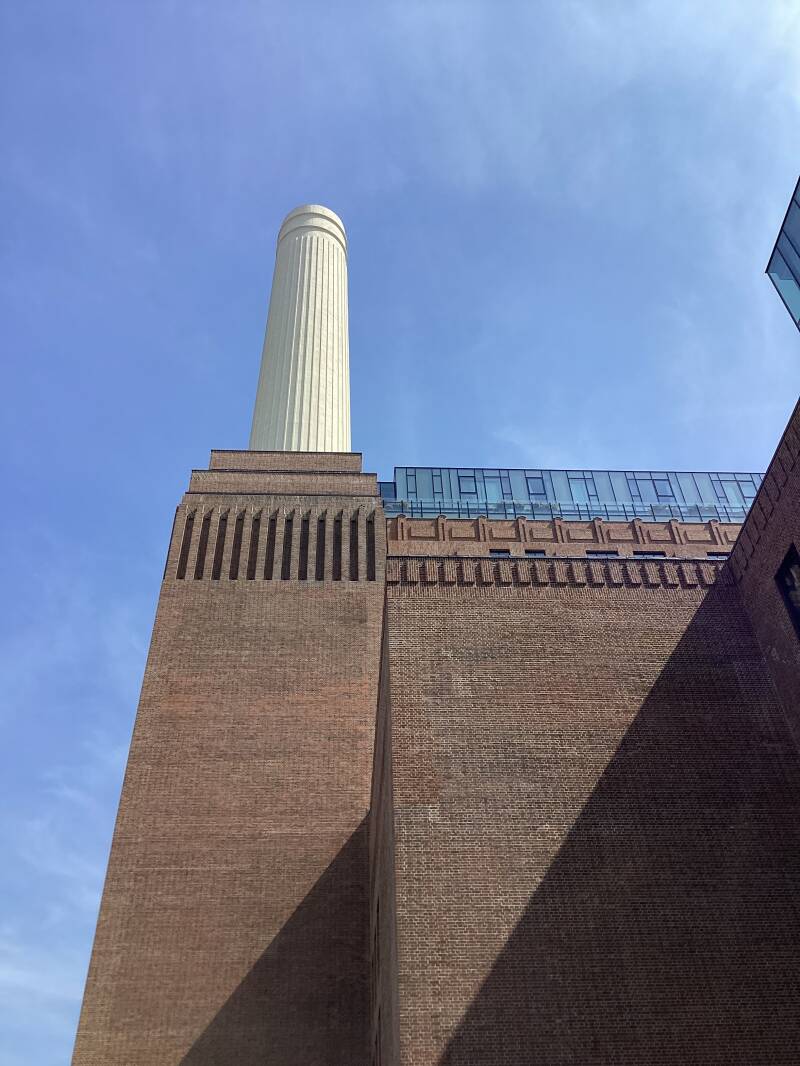


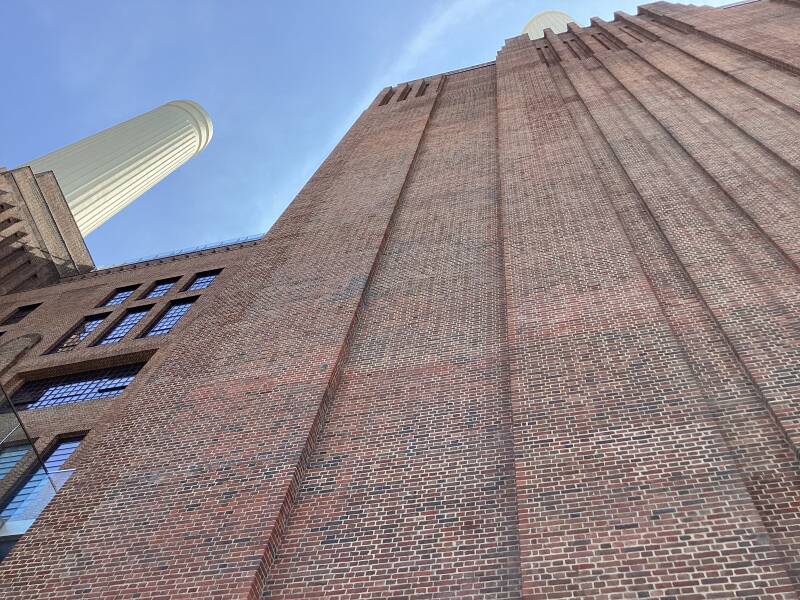
A BIT OF HISTORY…















Sir giles Gilberts scott
The LONDON POWER CO.’s masterstroke was to bring Sir Giles Gilbert Scott on to the team to help redesign the exteriors. Scott came from a long family of renowned architects – his grandfather was responsible for the ALBERT MEMORIAL and the MIDLAND GRAND HOTEL at ST.PANCRAS STATION. Giles himself designed Liverpool’s enormous Anglican Cathedral and the classic K2 and K6 red telephone boxes. He was a safe pair of hands who would cleverly blend the classic with something much more contemporary. Working alongside fellow architect JAMES HALLIDAY, who devised the power station’s magnificent ART DECO interiors, and with the oversight of LEONARD PEARCE, LPCs chief engineer, together they created a cathedral-like structure that soon won plaudits.
Helen Bowman offers members a five-part trek through the life and times of Battersea Power Station, starting with the development of coal-generated electricity for the masses
survivors OF The old POWER STATION and new additions. All for you to enjoy!
Closed as a working station in 1983, the building's future remained uncertain for a decade. Bought in 1991 by an entrepreneur who had received planning permission for a leisure theme park but who later ran out of money, it was resold in 1993 to a property developer. In 2006 'a dynamic integrated environment of wide ranging occupational, recreational and residential functions and activities' was promised.

















MODELS. some failed PROJECTS, as well
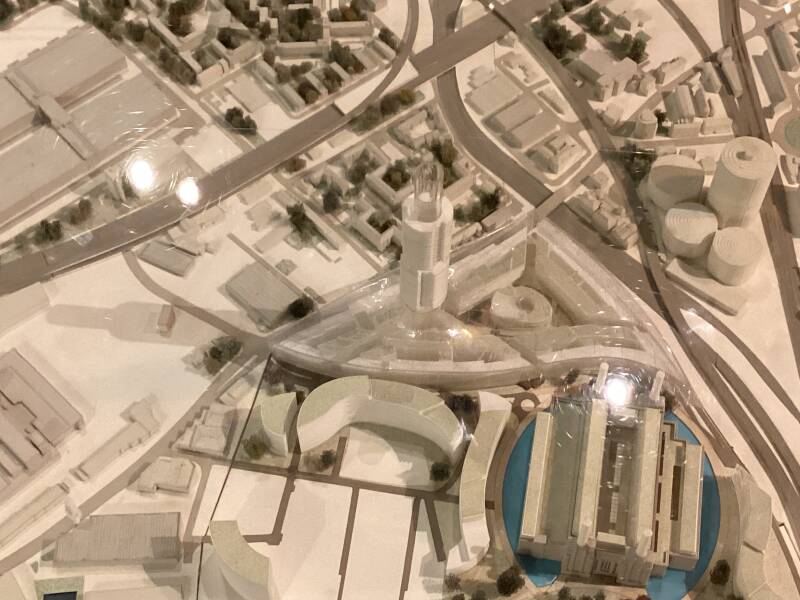


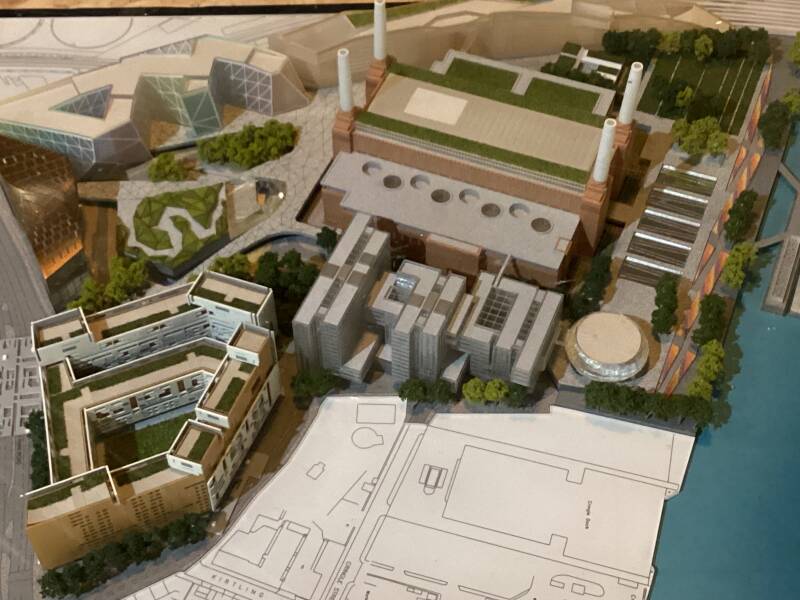


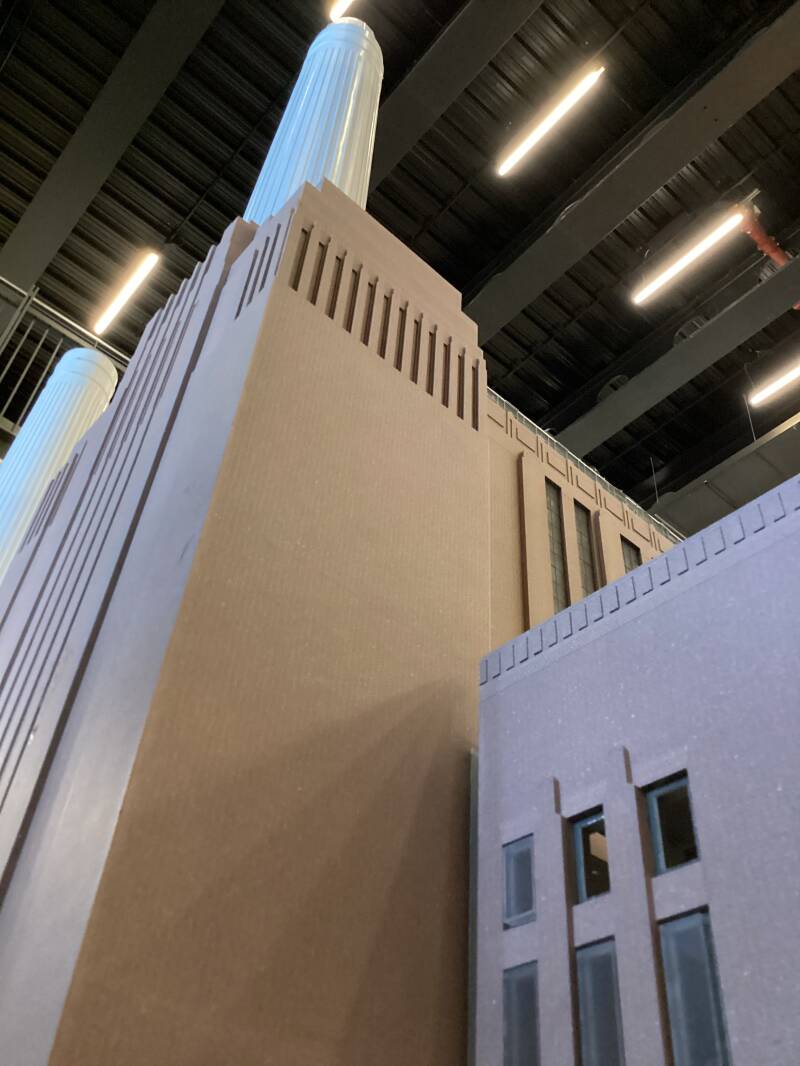

Working here: Apple hqs.

Over the past years, Apple has deepened its investments in the U.K., inaugurating a new U.K. headquarters and a new Apple Store at London’s Battersea Power Station to better serve customers, creating new opportunities for developers and expanding its work with suppliers large and small. Including Apple’s spend with U.K. suppliers, the thriving iOS app economy, and direct employment, the company now supports more than 550,000 jobs across the country.
Battersea Power Station accommodates Apple’s growing team, which now totals nearly 8,000 employees across the country. With over 500,000 square feet, the six-story space has been designed around collaboration, inclusivity, wellness, and sustainability. The reimagined Battersea Power Station has swapped coal for clean power, with the building running on 100 percent renewable energy.
Living here
Visiting
Heritage trail
To cap it all, a surprise: there is still a “power station” in place!
Battersea Power Station Development Company had a vision to bring the power station back to life and so they worked on the project since the beginning to design and build a solution that would allow the power station to once again be a source of energy. This involved the construction of a modern day ENERGY CENTRE in the basement of the power station and a DISTRICT HEATING AND COOLING NETWORK to supply heating, cooling and electricity to the entire 42-acre site.
Therefore, there is 73,000 sq ft basement energy centre, which is split over two levels. The total heating capacity is of 42.75MW, cooling capacity of 30MW and electrical capacity of 7.3MW. This is generated from two 2MWe CHP engines, one 3.3MWe CHP engine, three 10MWth gas-fired boilers, seven 60m³ thermal stores and six 4MW chillers. A large energy centre.
Faraday house. It was Inevitable finding his name here!
The discoverer of electricity Michael Faraday was born at the Elephant & Castle (to be precise at the parish of ST.MARY’S, NEWINGTON BUTTS) in 1791 when the Elephant & Castle Inn was an important coach stop outside London on the way to Kent and Sussex.
There is a plaque in the wall commemorating Michael Faraday.
Grosvenor bridge (trains to/from victoria station)

Grosvenor Bridge, originally known as, and alternatively called Victoria Railway Bridge, is a railway bridge over the River Thames in London, between Vauxhall Bridge and Chelsea Bridge. Originally constructed in 1860, and widened in 1865 and 1907, the bridge was extensively rebuilt and widened again in the 1960s as an array of ten parallel bridges. There are now eight tracks across the bridge.
heritage and learning hub about the historical power station

Located in Grosvenor Railway Arch, offers the opportunity to see a historic model of the Power Station and the chance to understand more about the building’s role in powering London in the 20th century.
A bit more about the area around the bps

Electric boulevard
Appartments, hotel, shops, eateries
The duchess belle ph
The cover of ANIMALS shows an inflatable pig drifting between the chimneys of Battersea Power Station. The idea for the pig came from Roger Waters rather than Hipgnosis, but POWELL arranged for 14 photographers to shoot the inflatable (nicknamed “ALGIE”') from different locations around the power station. However, as soon as it was airborne, the rope snapped, the pig broke free, and was soon drifting towards 10,000 feet. "I had to call 999 from a phone box and tell the police", recalls POWELL. "They stopped all flights in and out of Heathrow". The shoot eventually lasted three days, with the sky from the first day being combined with the images of the pig from the third using a dye-transfer. Powell notes that, "that first sky had this wonderful, broody Turner-esque quality to it, which suited the mood of the picture and the music".
Cats and dogs home

Battersea Dogs & Cats Home (now known as Battersea) is an animal rescue centre for dogs and cats. Battersea rescues dogs and cats until their owner or a new one can be found. It is one of the UK's oldest and best known animal rescue centres. It was established in Holloway, London, in 1860 and moved to Battersea in 1871.
Aviation: the SHORT BROTHERS, pioneers
Eustace purchased, repaired and learned to fly an old coal-gas filled balloon called ‘The Queen of the West’ that enabled himself and Oswald to set up a showman aeronautical business
Eustace and Oswald constructed their very first balloon in Horace’s laboratory in Hove, Sussex. They produced balloons for the Aero Club (The Hon. Charles Rolls, Griffiths Brewer et al) and secured a contract to produce them for the Indian Government.
Production continued until 1919 in railway arches 75 and 81. Coal gas and a launch site were on hand at the adjacent Battersea gas works.
The first aeroplane the three Short brothers built was in the Battersea railway arches and was Horace’s first design called the Short No.1. It was bought by Frank McClean. Horace went on to be recognised as a design genius by knowledgeable others in the aeroplane design and construction business. The three brothers were noted for the quality of their work.
No.1 was a tailless pusher biplane with a front elevator and wing-tip rudders and never got into flight due to the weight of the car engine used.
.
Former gasworks (very helpful for the short brothers)

Gasometers, those huge, round storage tanks that rise and fall with a concertina action, looked somewhat out of place in today’s more sanitised urban landscape.
Former convent, now cloisters business centre

The masons arms ph


Great views from the riverside;On the other side of the thameS…PIMLICO (STILL PIMLICo) and chelsea
GROSVENOR WATERSIDE, ON THE Site of the grosvenor canal

Lister hospital

RANELAGH GARDENS

Royal chelsea hospital & gardens

Coaling jetty
The Coaling Jetty received the coal from barges, known as FLATIRONS, on the River Thames. Coal was then transported via cranes, hoppers and a series of conveyors to the Boiler House. The jetty also supported a grid screen to protect the WATER INTAKE CHAMBERS from foreign objects.
The Coaling Jetty is 133m long and 11m wide. It was constructed from reinforced concrete and built inside temporary cofferdams. The deck is divided into four sections, the two central sections have larger spans designed to span over the two proposed intake chambers. Ultimately only one of these intake chambers was constructed with the first half of the power station and the second was not built. Read more
Chelsea bridge
Chelsea Bridge is one of the most important crossings of the Thames in West London. The first bridge on the site was proposed in 1846 as an Act of Parliament, and was built by 1858 to go alongside the new Battersea Park. However, what else is there to this bridge? Here are some of facts about this crossing point:
Julius Caesar crossed at the same place
When the bridge was originally being constructed, the excavators found a vast number of Roman and Celtic artefacts on the riverbed. After investigating, Historians believe that they had found where Julius Caesar had crossed the Thames during his invasion of Britain in 54 BC. The most significant find was a bronze and enamel shield, known as the BATTERSEA SHIELD, which is one of the most important pieces of Celtic military history to be found in the UK.
It’s made of pieces from all around the world
The Chelsea Bridge has a little bit of an international flair. The materials used to build the bridge came from the former British Empire, as agreed by the Ministry of Transport. In essence, the STEEL came from Scotland and Yorkshire; the TIMBERS from Douglas Fir Trees in Canada; the GRANITE from Aberdeen and Cornwall; and the ASPHALT was originally from Trinidad.
Red, White and Blue Colours
The bridge was repainted in the 1970s with a RED AND WHITE colour scheme. However, this caused some controversy from the CHELSEA FC fans who believed their local landmark had been painted in the colours of their rivals, ARSENAL.
To accommodate, the bridge was repainted in 2007 white with a red trime, and the balustrades a greyish blue.
It was a Biker’s Paradise
Chelsea Bridge was very popular during the early 50s as a motorcyclists racing and stunt location. It was used as a Friday Night meeting point for decades for bikers, until the turn of the 21st Century.
Many of the meetings were very noisy but generally peaceful, apart from one meeting in October 1970. There was a big fight between the Essex and Chelsea Nomads and the Road Rats, Nightingales, Windsors and Jokers (rival bike gangs). 20 people were arrested and spent time in prison for various offences.
Julius cAesar, at battersea
In the course of his Gallic Wars, Julius Caesar invaded Britain twice: in 55 and 54 BC.[4] On the first occasion, Caesar took with him only two legions, and achieved little beyond a landing on the coast of Kent. The second invasion consisted of 800 ships, five legions and 2,000 cavalry. The force was so imposing that the Celtic Britons did not contest Caesar's landing, waiting instead until he began to move inland.[3] Caesar eventually penetrated into Middlesex and crossed the Thames, forcing the British warlord Cassivellaunus to pay tributeto Rome and setting up Mandubracius of the Trinovantes as a client king. The Romans then returned to Gaul without conquering any territory. BRITAIN had to wait only a few decades to become ROMAN… LONDINIUM was founded in 43 a.d…
The Catuvellauni (possibly meaning "war-chiefs" in the ancient Gaulish Celtic language) were a tribe or state of south eastern Britain before the Roman conquest, attested by inscriptions into the 4th century AD.
Something of the history and fortunes of the Catuvellauni and their rulers before the conquest can be traced through ancient coins and references in classical histories. They are mentioned, for example, by Cassius Dio, who implies that they led the resistance against the Roman conquest in AD 43. In the 2nd century AD they appear as one of the civitates (client Kingdoms) of Roman Britain in Ptolemy's Geography. In terms of where they were found, they were centred on the town of Verlamion (near modern St Albans) and the surrounding areas of Hertfordshire, Bedfordshire and southern Cambridgeshire. Thus their territory was bordered to the north by the Iceni and Corieltauvi, to the east by the Trinovantes, to the west by the Dobunni and Atrebates, and to the south by the Regnenses and Cantiaci. As such the inhabitants of Warwickshire will at the very least have interacted with these people.
London, a celtic city?
According to legend, London was founded by King Lud, ruler of the Trinovantes tribe of Celts in the 1st century bc. But there is much more to King Lud than prehistoric kingship. Tracing the ancient legends back to their source, historian Oliver Hayes reveals a remarkable truth - that "King Lud" was really a god and London was his Holy City.
Thames, a CELTIC name
Victorian historians had a theory that the Roman-era Thames practically had no banks, but instead spread out into a vast lagoon at high tide.

There are some conflicting theories about the origin of the name Thames. Most specialists seem to believe is derived from the Celtic word ‘Tamesas’, recorded in Latin as ‘Tamesis’, which is believed to have meant dark.
A different theory: Native Britons called the river “Tamesa” or “Tamesis”from the Celtic word “tam,” meaning smooth or wide spreading. The Romans adopted the name, translating the river’s name to Thamesis.
The river was regarded by the CELTIC PEOPLES asa living being, an important member of the community, and the lifeblood of the land. Other natural water sources seem to have been regarded similarly in Celtic culture. Archaeologists have determined that lakes and rivers were an incredibly important resource because of the number of objects that have been found in them. It is assumed that these objects were deposited as part of a ritual.
What about the name london?
On the site of the new Bloomberg London building was found collection of tablets which is the largest and earliest of its kind in Britain and includes the first known reference to “Londonium”
Richard Coates argues that the original name was derived from the pre-Celtic name Plowonida, an Indo-European compound word. He argues that the name translated to swim river or boat river (Thames). As the name of a place, it meant "the wide river area" where swimming and the use of a boat were the only means of crossing. According to his theory, the Celts that later occupied the area were unable to pronounce the “p” hence the river became known as Lownida while the settlement was called Lownedon. The settlement's name was then converter to Londinium by the Romans.
A theory from Geoffrey Monmouth, suggests that the word London relates to the etymology of Britain, which is derived from Brutus. He states that London was founded as the "New Troy" by the Trojan Aeneas who was the great-grandfather of Brutus. A tribe known as the Trinovantes later inherited the legacy. He suggests that the settlement which at one point called Trinovantum was rebuilt by King Lud. Lud later got buried under the LUD GATE which is where it gets its name. The city’s name then became Caer-Lud which translates to the fortress of Lud and later evolved to Kaer Llundain and eventually London.
Battersea park
Battersea Park is a large (200 acre) Victorian park, built between 1854 and 1870
Situated on the former common fields of BATTERSEA, the history of which can be traced back to the 7th century. It may have been the point where Julius Caesar crossed the THAMES to subdue the Catuvellauni tribe. In about 1560 the river was roughly embanked and it was here in 1671 that COLONEL BLOOD hid in the reeds intending to shoot Charles II who was bathing. The Colonel confessed at his subsequent trial for his audacious attempt to steal the Crown Jewels that 'his arm was checked an awe of majesty' . You are going to hear from him when you visit the TOWER OF LONDON.
The RED HOUSE tavern, an Elizabethan building of red brick adjoining the fields, attracted the riff-raff of London and nearby were grounds for pigeon and sparrow shooting. In summer gypsies camped on the fields. On Sundays fairs were held with horse and donkey racing, roundabouts, theatres, comic actors, dancers, conjurors and fortune tellers, gambling, drinking booths and hawkers and vendors of all kinds of articles. Thousands of people were landed by boat and eventually the Government was forced to intervene.
At that time the fields comprised low marshes intersected by black streams and ditches and separated from the river only by a narrow raised causeway. Market gardens occupied part of the land , and it is said, ASPARAGUS were first grown here.
In 1829 the DUKE OF WELLINGTON fought a duel here with LORD WINCHELSES who had accused the Duke of treachery to the Protestant cause and treason against the constitution. WELLINGTON was in favour of CATHOLIC EMANCIPATION. Winchelsea kept his hand at his side when the Duke's second gave the order to fire. The Duke consequently fired wide. Winchelsea then fired into the air and tendered an apology. All that happened at 8 am!.
Following suggestions by Thomas CUBITT in 1843 to Queen Victoria's Commission for Improving the Metropolis, an Act was passed in 1846 to enable the Commissioners to form a ROYAL PARK in Battersea Fields at a cost not exceeding €200,000; 320 acres were purchased, 198 of which were to form the park, the remainder being leased for building. The surface was raised and the park laid out under the direction of Sir James PENNETHORNE, stepson of JOHN NASH (the PRINCE REGENT favourite architect).
As ST.KATHARINE DOCKS were dug out, the earth removed from there was transported to fill the marshland here.
The park was finally opened in 1853. In 1860 a lake was excavated and in 1864 the subtropical garden was laid out.
In 1885 the Albert Palace from the Dublin Exhibition of 1872 was erected at the south end of the park for concerts and art exhibitions, but these were rarely successful and the building was demolished in 1894.
In 1896 the park was crowded with those who had fallen for the new CRAZE OF BICYCLING. Hundreds came to practise or to watch the participants, who were forbidden initially to ride in HYDE PARK. Battersea Park became and remained fashionable for this pastime.
In the park now there are a children's zoo, a deer park, playing fields, tennis courts and an eight-lane running track. And bicycles for hire…
War times

Anti-aircraft guns and barrage balloons were installed to protect London. Shelters were dug. Allotments and a pig farm created. The air raid shelter was used by people from the mansion blocks along Prince of Wales Drive so they could hide safely from bomb blasts if an air raid was imminent in World War II. You can spot them and find some photos from when it was open - here's a picture of one of the tunnels (part of a series of photos of the interior by Andy Hebden on Flickr). At the end of the first tunnel it goes left, and there are more tunnels. These shelters are quite common in London's parks . They were built to be fairly explosion resistant. There are several much larger ones on Clapham Common which are visible as sort of humps in the ground covered with rough tarmac, with the remains of filled-in stairs visible at the sides - the outdoor gyms there are in some cases built on the old shelter roofs. They were usually built in built-up areas which didn't have gardens where people could build their own shelters.
The Peace Pagoda, erected in 1985, was a gift from the Japanese Buddhist order Nipponzam Myohoji ( a gift from the Founder of the Japanese Buddist Movement, Venerable Nichidatsu Fuji) to encourage/celebrate world peace. It is built of reconstituted Portland stone and Canadian fir to a Japanese design. Four gilded bronze figures of Lord Buddha adorn the interior depicting significant parts of his life: birth, enlightenment, first sermon and parinirvana (attainment of nirvana).
It is 1 of 80 of it’s kind located in Europe, Asia and the United States.
The status, offering panoramic views of Chelsea Embankment, acts as a constant reminder of the resilience of the human race and the beauty of peace and harmony. A symbol of escapism for self-reflection…
A saffron-robe clad Buddhist monk, gently beating a drum as he does a daily perambulation at sunrise from his temple to the Peace Pagoda, is a familiar sight.
In 1951 part of the park was transformed into a pleasure garden for the FESTIVAL OF BRITAIN. The gardens were laid out by Osbert Lancaster and John Piper.



The Royal Festival Hall was built as part of the Festival of Britain, a five-month national exhibition and fair held to help the nation recover after the Second World War.

The famous Battersea Fun Fair, created for the Festival, survived until 1972 when its rides were considered too old to be safe and it was closed down.
Golf course

Situated in the heart of Battersea Park, this 12-hole golf course is perfect for both the seasoned pro or golfing newbies.
Designed to accommodate all ages, you will find yourself navigating steep slopes, cascades and rockeries for the top prize.
The stone sculpture Three Standing Figures is by Henry Moore (1948) and the bronze Single Form by Barbara Hepworth


The memorial by ERIC HENRI KENNINGTON commemorates over 10,000 men who had been killed or listed as `missing presumed dead’ whilst serving with the 24th Infantry Division, based in East Surrey. You’ll find it near the athletics stadium, to the north of the lake.

After 9/11
Unveiled HERE in 2011, but was removed afterwards and replaced in the OLYMPIC PARK. I though this was a good excuse to link thus web to the ones dealing with EAST LONDON…and to remind you of the great achievements of the mayor in place in 2011.
Winter garden
Old english garden

The recent makeover of Battersea Park’s Old English Garden, saw London perfumery Jo Malone Limited and gardening charity, Thrive join forces to transform this neglected gem.
Built originally in the 1900’s, this now Chelsea gold medal-winner is a fragrant floral retreat and the perfect location for a tranquil walk.
The garden is free to visit and open all year round.
The Brown dog
This statue represents a contentious political and scientific history.
To understand the gravity of this winsome canine sculpture, we have to go back to 1903, when allegations of inhumane (and illegal) experimentation on a brown terrier at University College London caused an outrage. Although the medical professor in question won his ensuing libel case, the incident inspired a groundswell of support for the British anti-vivisection movement.
In response, the original Brown Dog Statue was erected in the London Metropolitan Borough of Battersea. A well-established center of progressive politics, Battersea was home to London’s only anti-vivisection hospital (which neither conducted animal experiments, nor employed physicians who approved of the practice) and thus was friendly territory for the statue and its supporters. The memorial featured a bronze sculpture of the now-infamous brown terrier, drinking fountains for humans and dogs alike, and an inscription that detailed the suffering of the pooch, called out University College London by name, and advocated for the abolition of such experimentation.
PUMP HOUSE GALLERY
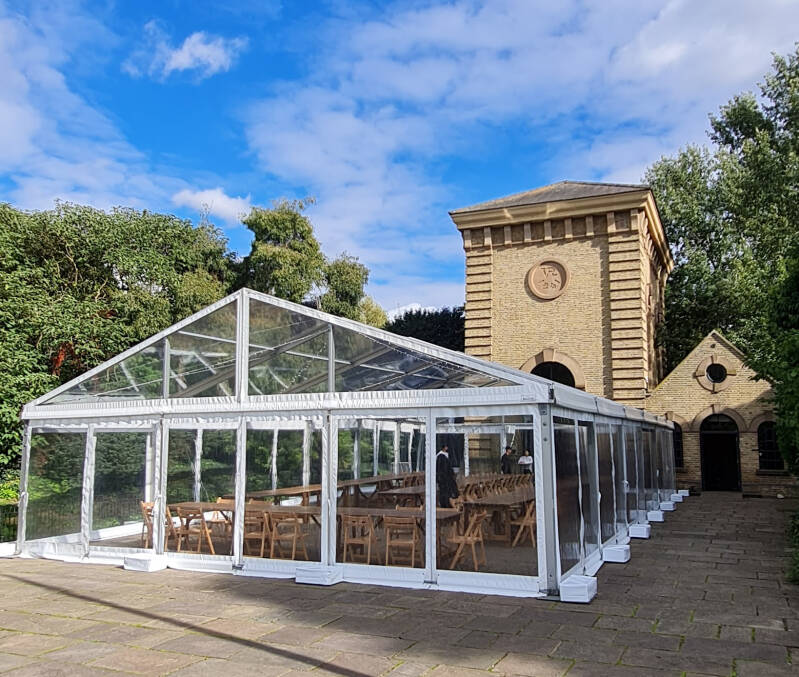
A restored grade II listed building, built in 1861 to supply water to the lakes and cascades of the then new Battersea Park. Derelict for many years, it was neglected by all but inquisitive children and sweethearts on secret trysts. In 1986 Wandsworth Borough Council took over responsibility for the Park.
Following this, English Heritage and Wandsworth Council worked together on the £400,000 restoration project and the building reopened in 1992 as a shop, Park Information Centre and Art Gallery.
Trees and shrubs, birds and insects
The park exists as a sanctuary of nature in an increasingly urban environment. The eight themed gardens feature flora as diverse as palm trees and roses. Visitors can also enjoy the network of lakes and ponds alive with fish, insects and fowl. Songbirds and squirrels populate the Plane-tree lined carriageways, and, in recent years, brightly-coloured ring-necked parakeets (pictured) have become a common sight.
Prince of wales drive. Crown estatE, SOUTH OF THE PARK

The original idea was for Battersea Park to be surrounded by middle-class villas, as seen in other contemporary parks in Britain. The land was allocated for building, under the management of the OFFICE OF WORKS, but almost nothing was built for about 30 years. One villa, Carlton Lodge, was built in 1884 with the final villas (QUEEN ANNE style) and tall mansion blocks built between 1892-1902 (when building was at its peak) as part of a planned development by the Crown Estate designed to recreate something of the splendour of the mansion blocks north of the river.
Before leaving the park, a mistery: do the columns of burlington house lie, here, bufied, on the NW CÓRNER OF BATTERSEA PARK?

And Next chapter: a riverside diversioN TOWARDS THE OLD VILLAGE of battersea AND WANDSWORTH

Your tour continues on, though
ALBERT BRIDGE (ALBERT… keep always present during your tour, this name)

“Break step”!. Soon after construction, there were concerns about the strength of the bridge as it would frequently vibrate, a problem which was amplified when large numbers of people walked across the bridge in step – an issue when troops from the nearby CHELSEA BARRACKD crossed the bridge.
The Albert Bridge Company was formed to build and operate the bridge and construction started in 1870. The bridge was designed by Rowland Mason ORDISH using his own patented design. Although construction of the Albert Bridge was approved in 1864, the six year delay to the start of construction (due to plans and work on the Chelsea Embankment), allowed Ordish to design and build another bridge using the same principles – the Franz Joseph Bridge which spanned the River Vltava in PRAGUE.

There was a proposal to demolish the bridge in 1926 and replace with a new, stronger bridge, however lack of funding meant that this did not progress beyond the proposal stage. A second attempt to demolish the bridge was made by the London County Council in 1957, however a campaign led by John Betjeman saved the bridge again. BETJEMAN-led campaigns saved a few London buildings… the MEMORIAL to his honour, in ST.PANCRAS STATION is surely deserved!

After crossing the albert bridge….
Welcome to chelsea! Where the lbtc tour continues on

However, next chapter you have the chance to divert from the route and carry on to battersea village, wandsworth and putney






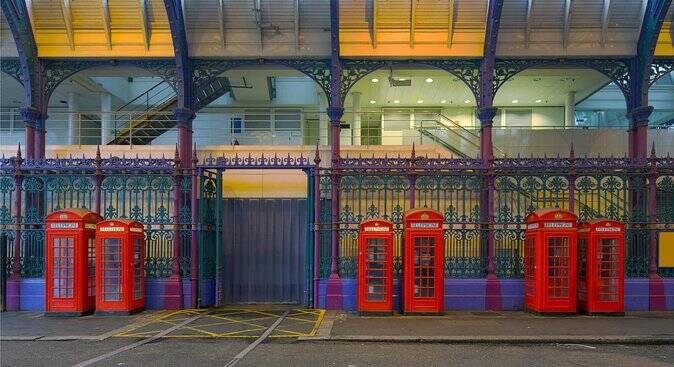











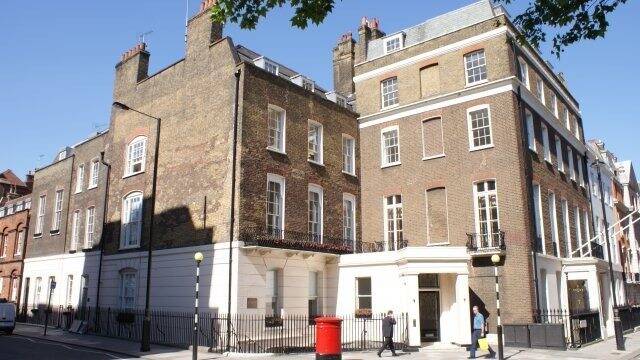

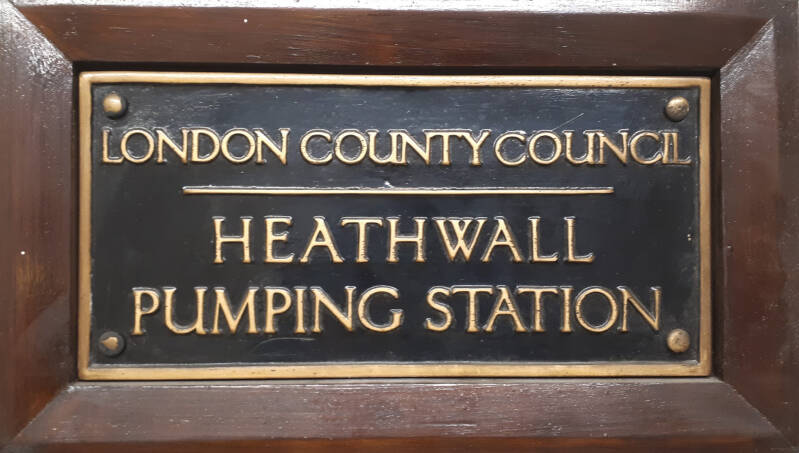






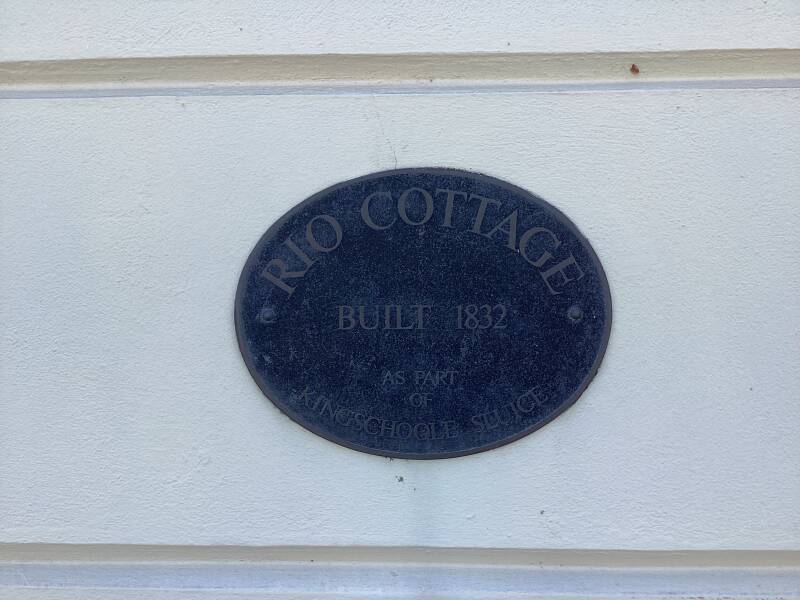









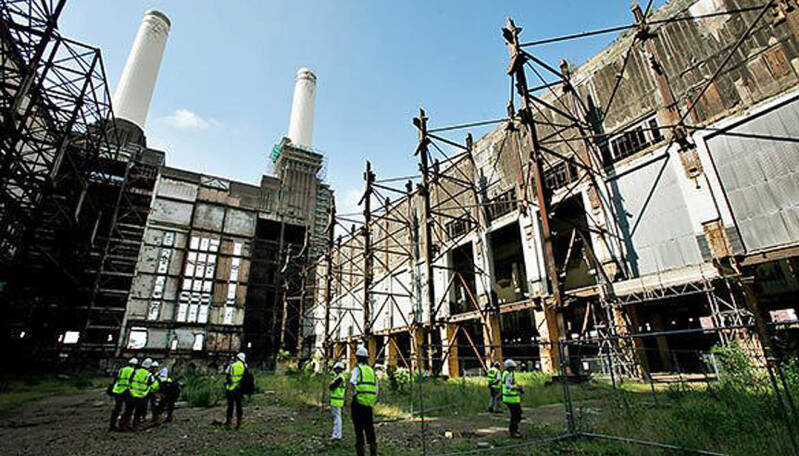

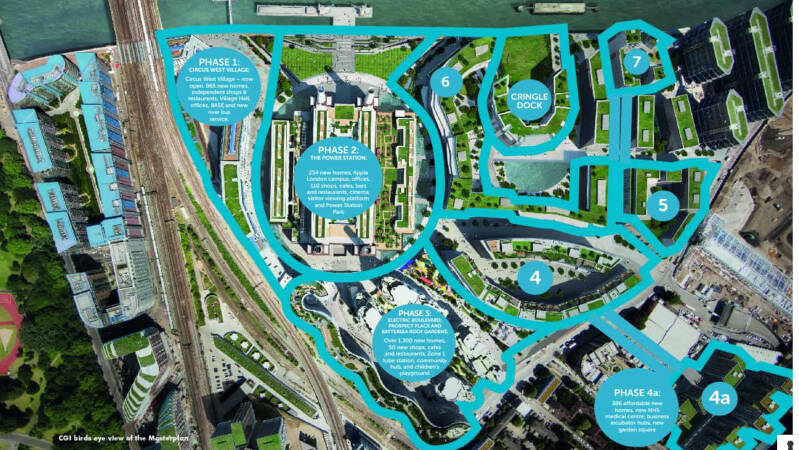


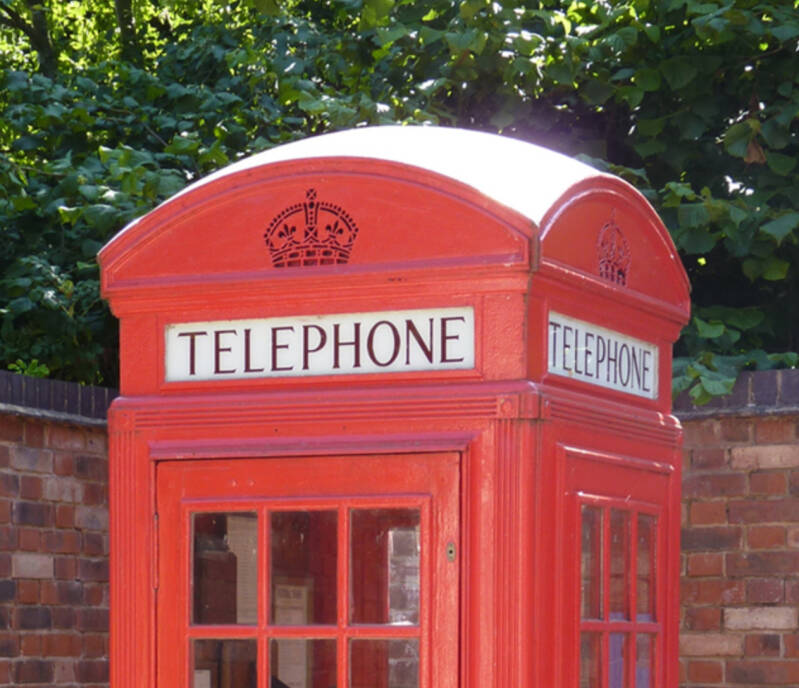



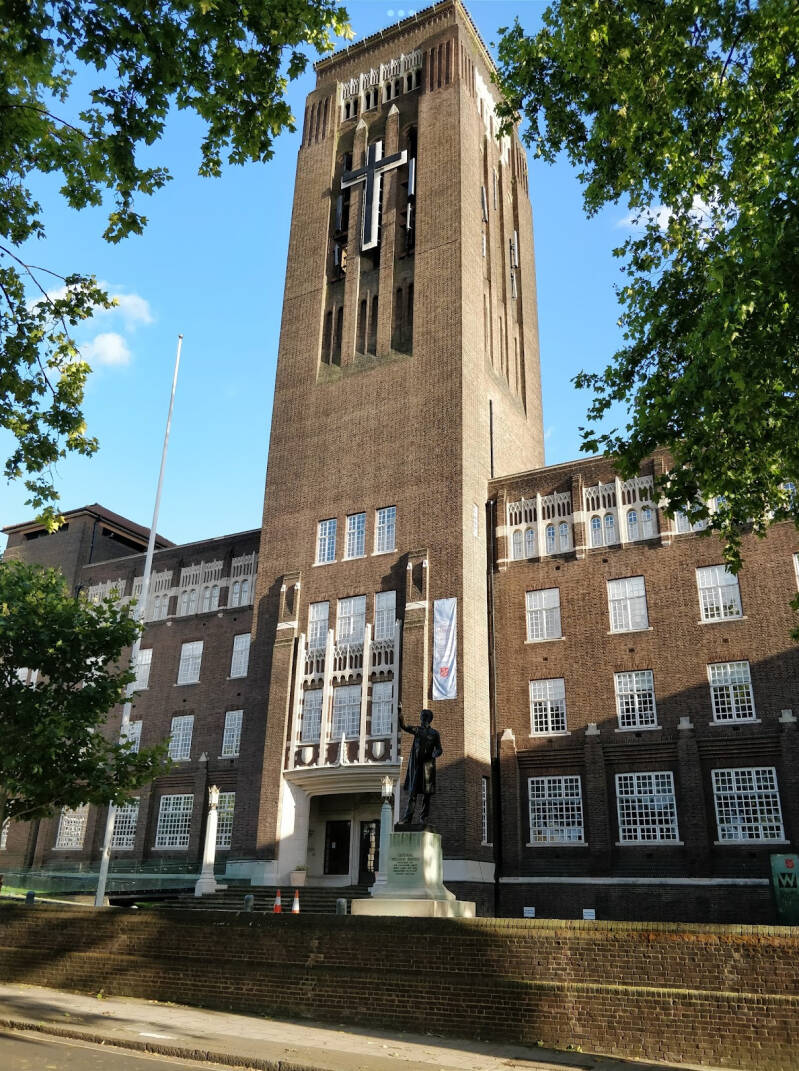
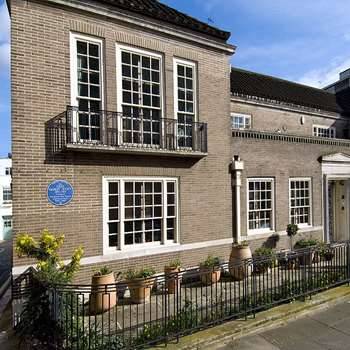






















































Create Your Own Website With Webador